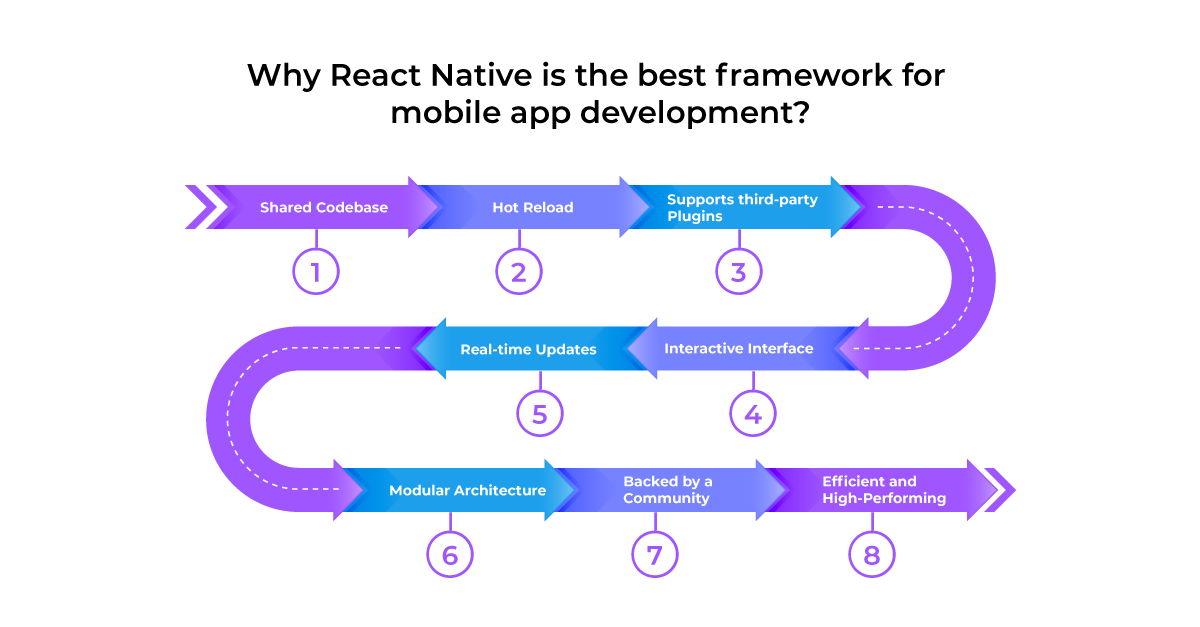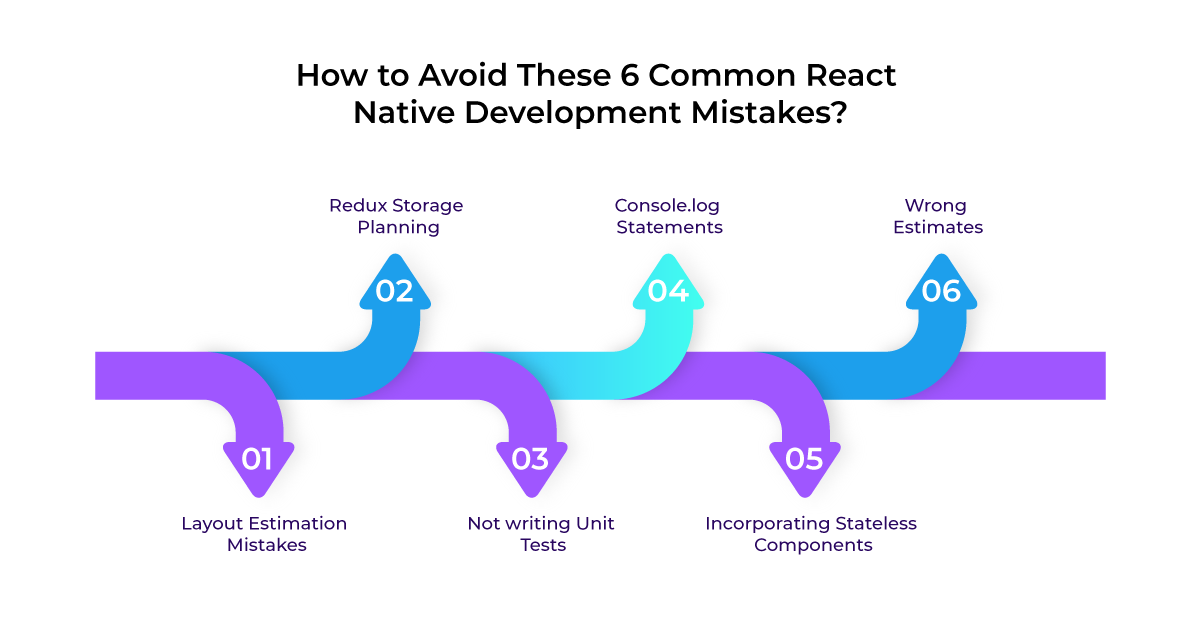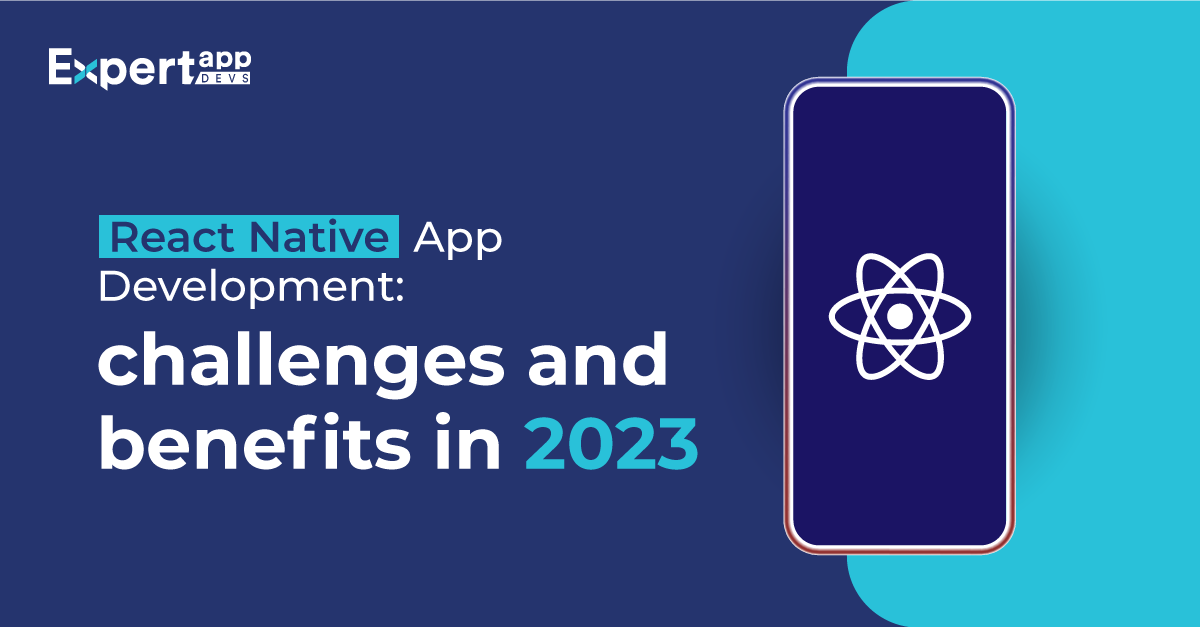React Native App Development: Challenges and Benefits of Using It
Modern-day businesses look forward to launching their mobile apps before other businesses. The idea is to gain a competitive edge in the market and acquire a maximum customer base. However, it is not possible if the developers intend to build an application from scratch.
Developing applications using pre-build widgets, designs and codes can accelerate the development. Frameworks can help ensure smooth development, fully-tested applications, and quicker launches.
Along with quicker deployments, businesses are looking to reach maximum users. A single codebase, reusable components, a stable foundation, and a single place for all stages of mobile application development make the framework a lucrative option for developers.
React Native, Flutter, and Xamarin top the charts of cross-platform app development frameworks. In this guide, we will discuss React Native in detail. We will look at the key features, their relevance, and the mistakes to avoid when developing with this framework.
Is React Native Still Relevant?
React Native recently launched version 0.69, a more stable and feature-driven framework.
With help from a strong community and the backing of able developers, React Native has stayed up-to-date with the development needs. There are a few reasons why React Native is still relevant.
1. As it is developed using the JavaScript programming language, it can be mastered easily.
2. The popularity and longevity of the framework have led to a strong community. This community-led development ensures a fully updated framework that syncs with the latest needs.
3. The community backed by internal developers of React Native is constantly transforming aspects of the framework that can enable smooth development. They had redefined the framework’s architecture with the recent release.
4. React Native enjoys a 38% market share in the cross-platform development frameworks segment. At least 14.8% of apps installed in the US were developed using React Native. The numbers show the true picture of the relevance of this framework for app development.
5. As the word native is used with React, it says what to expect from mobile apps. It offers a native-like look and feel. Despite using a common code, you can tweak it to suit the interface design requirements. As a result, the users will not feel they are using an app meant for other platforms.
Considering all the factors and the periodic update of the framework, you know that the framework is still relevant. It is at par with other upcoming frameworks and is still giving stiff competition to them.
The choice depends on niche factors such as the complexity of the application, the interface requirements, and the expertise of the developers.
Why React Native for Mobile App Development?
While it is a useful framework, you need to know if it can fulfill your requirements concerning mobile app development.
Here’s how React Native app development can help your business deserves.

1. Shared Codebase
When you use React Native, you don’t need to write separate codes for the two platforms. You can develop a single code and use it for both platforms.
You can add small tweaks to the code to make it more platform-specific. This will ensure quicker integration with the base components and enhance the user experience.
2. Hot Reload
You must recreate the production environment when you need to incorporate changes to an already-developed application. However, the hot reload feature allows you to view the changes in the live environment. You need not disturb the mobile application to run the changes. This makes it easier for you to check the update and see if you should go ahead.
3. Supports third-party Plugins
When using React Native, you can use the plugins to develop applications. This framework comes with JavaScript plugins and native plugins. You can use either to implement the important features of your business application.
4. Interactive Interface
What users are most likely to use- native-like user interfaces. If you can recreate the native look and feel, you will get more users for the application. React Native makes it possible to design applications with platform-specific design guidelines in mind. Apart from this, the pre-built declarative components can make it easy to design the application to meet the unique user needs.
5. Real-time Updates
You must ensure that the apps are updated and in sync with the platform requirements. As React Native apps are built using JavaScript, updating them is easy. Apart from this, the code push feature available with React Native makes it easier for you to launch updates in real time.
6. Modular Architecture
This is one of the biggest benefits associated with react native framework. You can easily use the code devised by other projects and use it independently. At the same time, the testing team is well aware of the program and logic used to develop the mobile application. They can accordingly plan the test cases they should use to assess the quality and functionality. It will save the developer’s time and improve the testing capabilities.
7. Backed by a Community
One of the major reasons developers prefer React Native is the strong community backing. You will notice that several dedicated developers are in charge of improving the app framework. They are constantly working towards enhancing their capabilities and offering better solutions. The community can also help you when you are stuck with a problem while developing the mobile application.
As the pace of mobile app development increases, newer technologies and trends are being introduced. It is important that the framework is capable of supporting the nascent business requirements.
8. Efficient and High-Performing
The framework is in sync with the requirements of mobile devices. This framework uses GPU to identify how the interfaces appear. As a result, they offer better performance, as they don’t need to use a CPU. The GPU is what makes the framework fast and stable.
Read More: - Why React Native is the Way Forward for Start-ups’?
What Are the Major Challenges with React Native App Development?
It is not all rosy to develop mobile applications with React Native framework. You might face several challenges while creating your mobile solutions.
1. Native Developer Dependency: It is important to note that you may depend on native app developers if the project is complex. You may need to use native-specific developers to build the logic that cannot be developed using JavaScript.
2. Doesn’t Integrate with Specific APIs: The React Native mobile applications may not integrate with specific APIs. You must develop the app from scratch if these APIs are important to business app development.
3. Complex Interface Design: This can be challenging when designing the interface with React Native. If you are developing a resource-intensive mobile application, you need to develop it using platform-specific languages. In case you need to use applications with extensive features, it can become difficult with React native. That’s when developers consider other frameworks and packages.
4. Relies on Third-party Libraries: The framework relies on third-party libraries and plugins for development. You may not be able to access certain libraries and features if they are not updated for the recent version of React native. This can pose to be an issue when developing a mobile application.
5. No Support for Parallel Threading: A single processor is used to compute several threads simultaneously in parallel threading. However, React Native doesn’t support this, so the framework may not support multitasking requirements.
Top 6 Mistakes to Avoid During React Native Development
No two frameworks are alike. Moreover, the development methods specified by the developers may also differ. This can lead to mistakes that you commit when developing mobile applications. Here are all the mistakes you should avoid when developing a React Native mobile app.

1. Layout Estimation Mistakes: When you design the layout for the application, you might use similar structures. However, the layout might differ in some portions for Android and iOS. The design guidelines play a pivotal role in determining the layout. Forms layout should be validated as well before committing to it. You might need to write a few lines of extra code to estimate the layouts properly.
2. Redux Storage Planning: While involved in layout design, you may not pay attention to data storage and retrieval. Redux helps in data storage, planning and debugging of the app states. This is important for secure mobile applications. You might want to include proper planning in your task sheet before using Redux. At the same time, you may want to use something other than Redux for small project requirements.
3. Not writing Unit Tests: They are important to test the functionality of the applications. However, most developers need to document the different functions and how they have developed the application. This can lead to errors in the app that go unnoticed. It is very important to write unit tests and assess every aspect of the mobile application.
4. Console.log Statements: They are extremely useful for React Native app development. However, leaving them in your application would be a grave mistake. They can lower the rendering methods and slow the application's performance.
5. Incorporating Stateless Components: The stateless components don’t possess any class. They take any arguments as display and include them in the DOM. However, you may not want to use stateless components to fulfill all development requirements. You should use pure components, as the developers can send AJAX requests and perform DOM operations without any hindrances.
6. Wrong Estimates: Often, developers need to account for the small portions of app development that require effort and time. As a result, the overall timelines may not work toward completing the app development. That’s why it is important to define the work scope to the minutest bit and then define the timelines.
How Expert App Devs Can Help Fill the Gaps in Development?
The popular framework has some of the best updates to support mobile app development. However, there are challenges that need to be overcome and mistakes to be avoided. For example, you cannot use certain classes or components or avoid certain factors when developing the application. Similarly, if you are planning app development with React Native, you should know how to develop the use case for a small project versus a large complex application.
Expert App Devs are completely aware of the efforts and planning that go into developing mobile applications with the React Native framework. We are well-versed in the platform’s ability and how to nurture it to reap its benefits. We have derived the process and best practices that support our app development goals.
Connect with our team if you want to build a React Native application for your business. We might help you from start to finish.
 Jignen Pandya
Jignen Pandya





